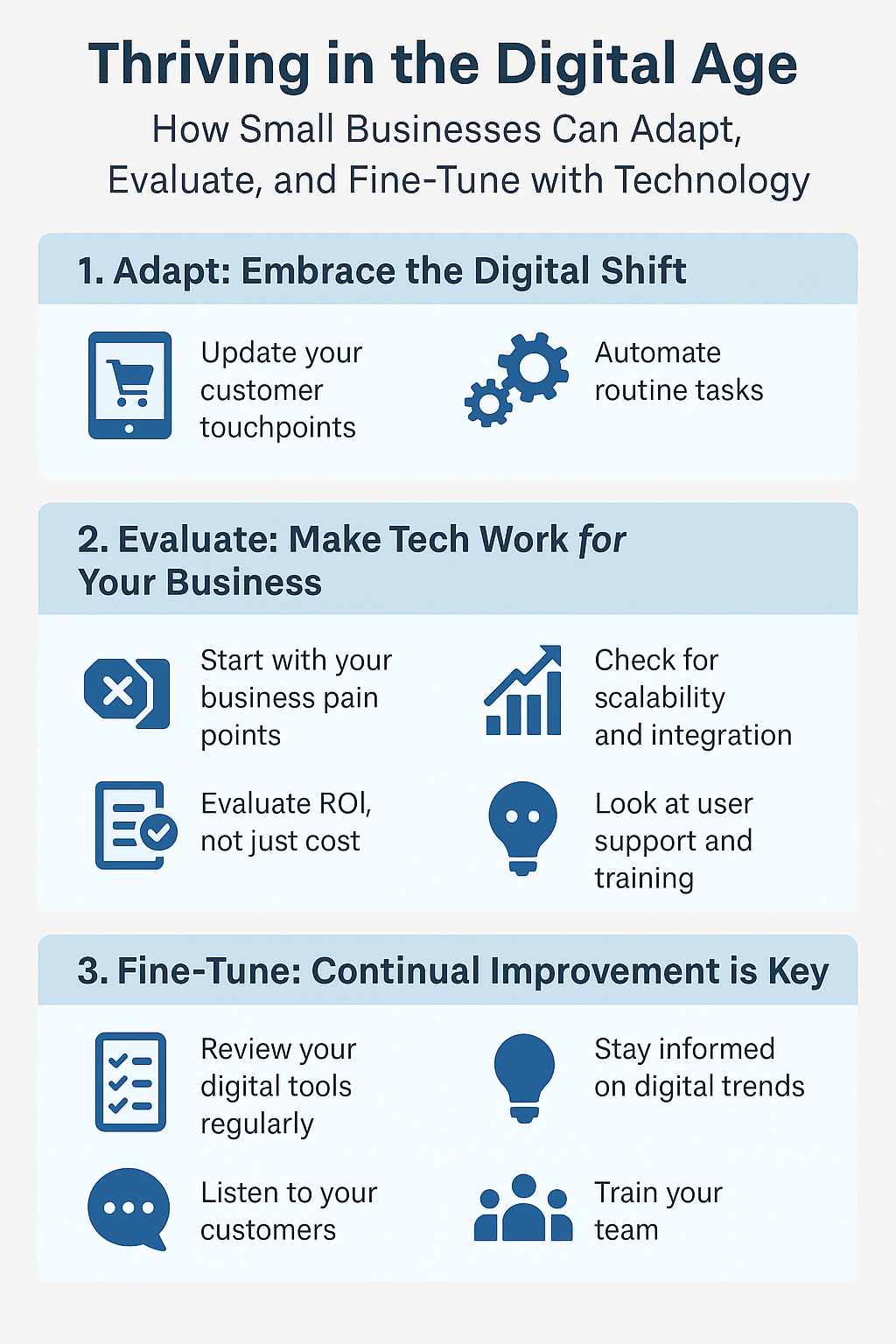This post is also available in:
Bahasa Malaysia
How Small Businesses Can Adapt, Evaluate, and Fine-Tune with Technology
The digital economy is no longer on the horizon — it’s here, and it’s rapidly reshaping the way businesses operate, connect with customers, and grow. For small business owners, this transformation presents both a challenge and a massive opportunity. Those who embrace and adapt to digital trends are not only surviving but thriving. The key lies in knowing how to adapt, what to evaluate, and when to fine-tune operations through the strategic use of technology.
1. Adapt: Embrace the Digital Shift
Adaptation starts with mindset. Digital transformation isn’t just about using new tools — it’s about rethinking how your business delivers value.
- Update your customer touchpoints: More customers are searching, shopping, and communicating online. If your business isn’t accessible or engaging through digital channels like social media, messaging apps, or a user-friendly website, you risk losing relevance.
- Automate routine tasks: Small business owners often juggle multiple roles. By adopting tools that automate accounting, payroll, email marketing, or customer service (e.g., chatbots), you can free up valuable time to focus on growth and strategy.
- Invest in cloud-based solutions: Tools like cloud accounting software, CRM systems, and cloud storage improve accessibility, security, and collaboration — especially for businesses with remote or hybrid teams.

2. Evaluate: Make Tech Work for Your Business
Not every new app or trend will suit your business. Evaluate tools and strategies with a critical eye:
- Start with your business pain points: Are you spending too much time on admin? Losing track of leads? Struggling with inventory? Let your problems guide your tech decisions.
- Check for scalability and integration: Can this tool grow with your business? Does it integrate with the platforms you’re already using?
- Evaluate ROI, not just cost: The cheapest tool isn’t always the best. Consider the time and cost savings over the long run. For example, a good POS system might cost more upfront but can streamline sales, inventory, and reporting — saving hours weekly.
- Look at user support and training: Choose solutions that offer accessible training resources and responsive support — especially important for business owners without a dedicated IT team.
3. Fine-Tune: Continual Improvement is Key
Digital adoption isn’t a one-time event. Technologies evolve, and so should your strategies.
- Review your digital tools regularly: Schedule quarterly reviews to assess whether current solutions are delivering results. Are they still aligned with your goals?
- Stay informed on digital trends: Subscribe to newsletters, attend webinars, and follow industry influencers. You don’t need to jump on every trend — just be aware of what’s out there and how it might benefit you.
- Listen to your customers: Use digital channels to gather feedback and observe customer behavior. This data can help you fine-tune your offerings, improve the customer experience, and innovate ahead of your competitors.
- Train your team: A digitally capable workforce is a huge asset. Encourage your staff to upskill, and offer training where necessary so they can get the most out of the tools you implement.
The Bottom Line
Small businesses today have unprecedented access to tools that level the playing field with bigger players. The digital economy rewards those who are agile, curious, and customer-focused. By adapting to trends, evaluating tools thoughtfully, and fine-tuning strategies continuously, small business owners can not only keep pace — they can lead in their niche.
The digital revolution isn’t coming — it’s here. The sooner you get on board, the farther you can go.